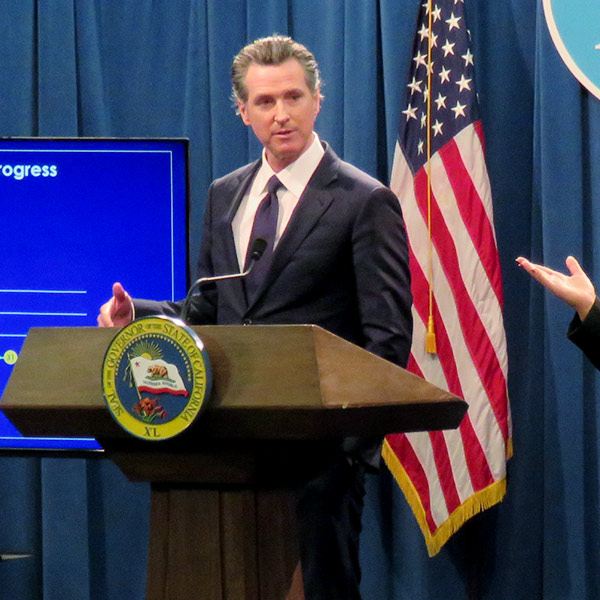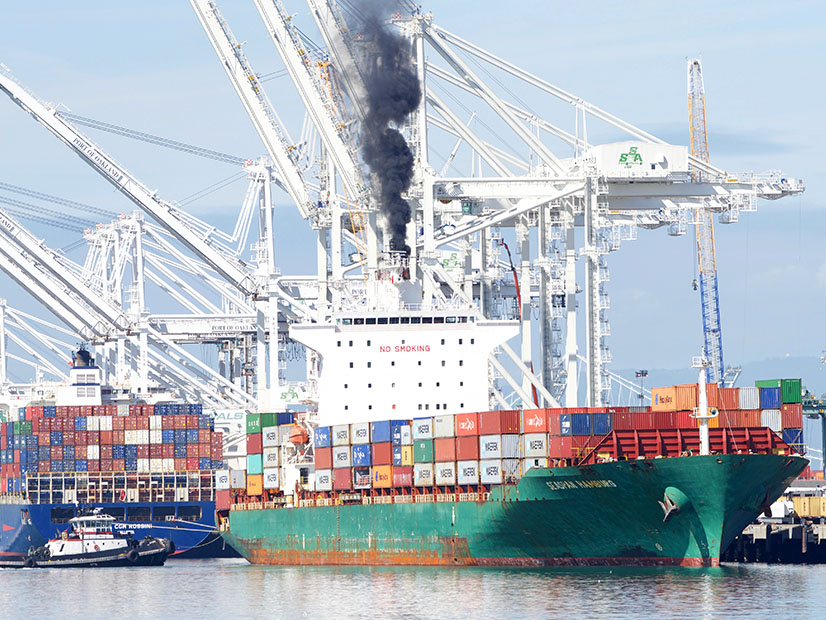California Gov. Gavin Newsom signed an emergency declaration Friday aimed at keeping the lights on this summer by paying for demand response from industrial users, speeding battery interconnections and waiving clean air regulations to allow for backup diesel generation.

“While we build toward a safe, affordable and reliable energy future that benefits all our communities, we’re also taking action to meet the challenges caused by climate change that are already at our doorstep,” Newsom said in a statement.
The governor faces a recall election in September. Former Gov. Gray Davis was recalled after the Western energy crisis of 2000-2001 caused blackouts. The state experienced its first rolling blackouts since the crisis last August, when demand outstripped supply during a severe Western heat wave. Close calls followed in September and in June and July.
In his emergency proclamation, Newsom cited the ongoing effects of heat waves, drought and wildfires in the West.
“Because of drought conditions, water supplies in California’s reservoirs have dropped to levels so low that hydroelectric power plants have had to reduce or cease production, leading to a reduction of nearly 1,000 MW of capacity and further exacerbating the drought’s impact on California,” he said. (See Western ‘Megadrought’ Curtails Hydropower.)
He also cited a potential shortfall, under extreme circumstances, of up to 3,500 MW this summer and 5,000 MW next summer.
During a heat wave in July, the Bootleg Fire in southern Oregon derated the Pacific AC Intertie, “which delivers power from the Pacific Northwest to California, by almost 4,000 MW,” it noted. (See CAISO Declares Emergency as Fire Derates Major Tx Lines.)
“Many other transmission lines are located in high fire threat areas, including lines located in other states on which California depends, and thus wildfires are likely to continue impacting California’s energy supply unpredictably during this wildfire season,” Newsom said.
The governor ordered a series of measures, some of which backtrack on the state’s push toward clean air and energy. The closure of fossil fuel plants in the West without sufficient nonpolluting resources to replace lost capacity is part of the state’s energy shortfalls. (See CPUC Orders Additional 11.5 GW but No Gas.)
Newsom’s order allows greater use of gas and diesel backup generators on days when CAISO declares an energy warning or emergency “based on its determination that, despite its reliance on all available resources, an imminent shortfall is projected because of an extreme heat event, a sudden and severe reduction in transmission capacity (including reductions due to wildfire), or both.”
It also releases ships in port from the requirement that they connect to shore power rather than continuing to run their diesel engines.
“Ships that are berthed in California ports while the CAISO grid warning or emergency notice is in effect shall not be required to use shore power until 11:59 p.m. on the third day following the last consecutive day on which the CAISO issued a grid warning or emergency notice,” Newsom said.
The governor’s office last summer asked U.S. Navy and Marine ships to disconnect from shore power to help avoid additional blackouts. (See CAISO Provides More Details on Blackouts.)
The proclamation also suspends certain water discharge requirements “for any thermal power plant that maintains operations to abate the effects of [an] emergency.”
The governor ordered the state’s utilities to pay large industrial customers a premium of $2/kWh to cut usage during tight supply conditions. Industrial customers in California currently pay an average of 14 cents/kWh for electricity, according to the U.S. Energy Information Administration.
He also ordered CAISO, the California Public Utilities Commission, the California Energy Commission and state agencies to speed the connection of lithium-ion batteries and other clean-energy resources this summer by expediting permitting and cutting through red tape.
State law and regulations “are suspended to the extent that the Energy Commission determines that such systems should be licensed,” he said.
“All energy agencies shall act immediately to achieve energy stability during [emergencies],” he said. The CPUC, the CEC and CAISO “are requested to work with the state’s load-serving entities on accelerating plans for the construction, procurement and rapid deployment of new clean energy and storage projects to mitigate the risk of capacity shortages and increase the availability of carbon-free energy at all times of day.”



